Iranian dissident rapper Toomaj Salehi released from prison

Iranian dissident rapper Toomaj Salehi, who was previously sentenced to death, has been released after serving one year in prison, Iran's Judiciary announced on Sunday.

Iranian dissident rapper Toomaj Salehi, who was previously sentenced to death, has been released after serving one year in prison, Iran's Judiciary announced on Sunday.
"The convicted individual, Toomaj Salehi, who had been sentenced to one year in prison for the crime of propaganda against the Islamic Republic, was released from prison on December 1, 2024, after serving his sentence," a statement released by the Judiciary's news agency Mizan said.
Toomaj, a metalworker from Isfahan in central Iran, emerged as a prominent figure in Iran's 2022 uprising, using his rap lyrics to condemn repression, injustice, and poverty.
During the height of the Woman, Life, Freedom protests on October 30, 2022, the intelligence ministry in Isfahan province violently arrested him again for his artistic activities in favor of the anti-government movement. While in custody, he was tortured severely and forced to make televised "confessions".
Toomaj was sentenced to 75 months in prison last July after the Iranian Supreme Court overturned the decision of a lower court sentencing the rapper to a death. More than a year after being arrested, he was released on bail in November 2023. Several days after his release, he published a video message alleging torture and mistreatment at the hands of intelligence agents. Almost immediately, he was re-arrested.
In April 2024, Salehi was sentenced to death by a revolutionary court in Isfahan on charges of "spreading corruption on Earth." Iran’s Supreme Court overturned the death sentence in June.
Toomaj's release came a few weeks after Iranian dissident journalist Kianoosh Sanjari committed suicide after warning he would take his own life unless several prisoners, including Salehi, were released.
Shortly after Sanjari's death, fellow activist Hossein Ronaghi began a hunger strike by sewing his lips shut. He vowed to continue his sit-in protests in this symbolic act until the late journalist and close friend’s demands to free political prisoners, including Toomaj, were met. From behind bars, Toomaj urged Ronaghi to end his hunger strike, pleading with him not to risk his life.
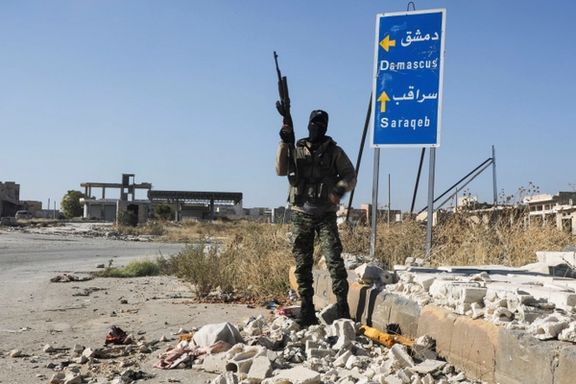
The fall of Aleppo to rebels opposing President Bashar al-Assad has caused a critical situation for the Syrian government with implications that may extend to the Islamic Republic of Iran.
Opposition forces have now advanced towards the outskirts of Hama and Homs, two strategic Syrian cities on the road to Damascus. The potential fall of Damascus and the overthrow of the Assad government is more serious than ever, causing deep concerns for the Islamic Republic and its leader, Ali Khamenei.
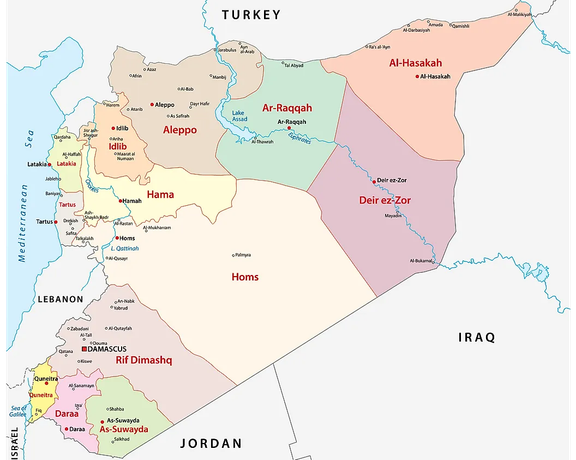
The collapse of Assad’s rule would dismantle a cornerstone of Iran’s regional strategy against Israel. It would also threaten the survival of Iran's proxy groups, which rely heavily on Damascus for support. Without Assad’s backing, these groups could struggle to sustain their operations, jeopardizing the Islamic Republic’s influence in the region.
For Khamenei and Iran’s Revolutionary Guards (IRGC), Assad’s government is a vital pillar of the so-called Axis of Resistance. Its potential fall could even endanger the stability of the Islamic Republic itself.
The coming days are pivotal for both Assad’s government and Iran. The defeat in Aleppo dealt a major blow to the morale of the Syrian army and government, but the greater concern for Assad and the Islamic Republic is the possibility of opposition forces advancing toward Damascus after consolidating their power in the north and toppling the government.
The opposition forces now control Aleppo and Idlib near Turkey’s borders and are rapidly advancing in Hama and Homs governorates with reports that they are at the gates of the provincial capitals. Capturing the cities of Hama and Homs would give them a strategic advantage, potentially allowing a push toward Latakia, the Assad family’s power base, or Damascus.
The situation today is starkly different from 2016, when Assad, with robust support from Russia, Hezbollah, and Iran, defeated opposition forces in the battle of Aleppo. Several factors have contributed to the weakening of the Assad government and its supporters:
- Russia's involvement in Ukraine: Russia, a key ally of Damascus, is preoccupied with the war in Ukraine, limiting its ability to provide military support compared to 2016.
- Hezbollah's diminished sway: Iran-backed Hezbollah, a powerful armed ally of Damascus, has suffered significant losses in its conflict with Israel and faces domestic pressure in Lebanon to reduce its involvement in regional conflicts.
- Iran's economic constraints: Tehran’s financial woes made worse by US sanctions have restricted its ability to provide financial and military aid to the Assad government. According to estimates, Tehran has spent tens of billions of dollars in Syria but now finds it hard to continue such support.
- Erosion of the IRGC's manpower and logistics in Syria: Key IRGC commanders, including former chief of IRG's extraterritorial Quds Force Qasem Soleimani, have been killed in recent years and the replacement forces do not have the same capabilities. Additionally, proxy groups such as the Afghan Fatemiyoun Division Iraq’s Popular Mobilization Forces (PMF) are less effective than before.
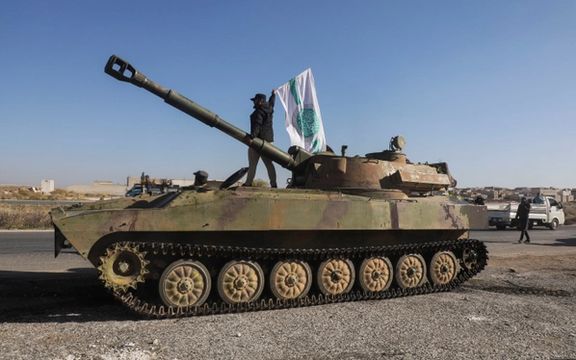
If Assad’s falls, Iran’s regional foreign policy could face a severe crisis. Damascus plays a crucial role in facilitating the transport of weapons, logistics, and financial support to Iran’s proxy groups. Its collapse would likely lead to:
- Disruption of weapons transfers to Hezbollah via Damascus and Latakia airports.
- Reduced support for Palestinian groups such as Hamas and the Islamic Jihad.
- Destruction of smuggling networks for arms and narcotics into Jordan and the West Bank.
For Iran, preserving Assad's government is a matter of strategic survival. While Khamenei and the IRGC are likely to make every effort to prevent its collapse, their resources and influence are far weaker than in the past. Ultimately, Assad’s fall could dismantle the 'Axis of Resistance’ and pose a serious threat to the Islamic Republic’s future.
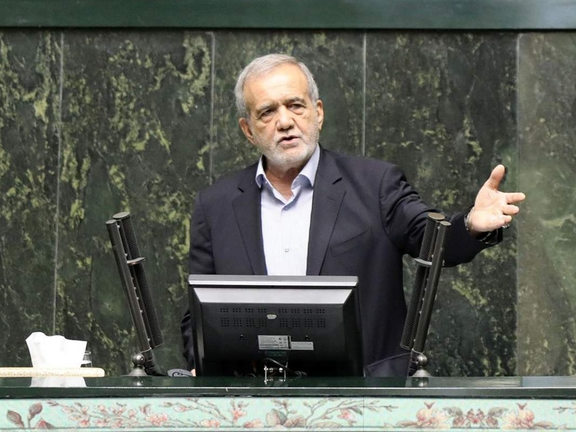
In a public appeal, the Iranian president urged citizens to conserve energy, emphasizing their role in mitigating the country’s ongoing energy shortage, a crisis that has intensified in recent months.
Speaking after a closed-door meeting between the government and members of the parliament, Masoud Pezeshkian told lawmakers, “Our need for you to continue on this path is far greater than what has been done so far,” emphasizing that overcoming the shortages in the energy sector required both government and popular cooperation.
The call comes as Iran grapples with widespread power outages, rising fuel prices, and a looming fiscal crisis.
While Pezeshkian stopped short of directly referencing potential increases in fuel prices, his remarks suggest an acknowledgment of the urgency of the situation.
The government’s longstanding narrative, which places the blame for the energy crisis on the people’s excessive consumption, has increasingly fallen flat in the face of growing public frustration.
Calls for citizens to conserve energy have become a familiar refrain, but many Iranians are growing skeptical of these appeals, seeing them as an excuse for government inaction rather than a solution.
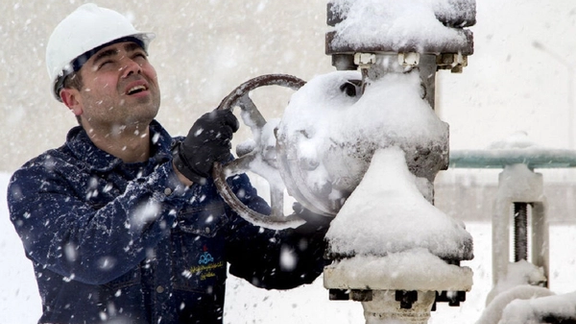
In September, Hassanali Taghizadeh, chairman of the Iran Electrical Industry Syndicate, dismissed claims of excessively high domestic electricity consumption, saying that Iranian households use roughly half the electricity per capita compared to European households.
"Don't blame the people. Don't falsely claim that people's consumption is high. The average per capita consumption of Iranians is 1,220 kilowatt-hours per year, while in Europe it is 2,120 kilowatt-hours," he said. According to Eurostat, the electricity consumption per capita in the household sector in the EU in 2022 was 1,584 kWh,” he said.
In his speech, Pezeshkian addressed the escalating energy shortages, claiming that they could only be corrected with the collaboration of both parliament and the people.
His rhetoric, however, appeared detached from the reality of the situation, as citizens continue to face power outages, unreliable energy supplies, and skyrocketing living costs.
The energy crisis is compounded by a widening fiscal gap, with the next year’s national budget projected to have a deficit exceeding $30 billion, or more than 30% of total expenditures.
While Pezeshkian briefly addressed the fiscal challenges in his remarks, much of the meeting appeared to be consumed by speeches and vague declarations, rather than solutions.
The government's repeated calls for the people’s help seem more like an attempt to deflect responsibility than an invitation for meaningful dialogue on energy policy reform. Other officials and commentators have argued that Iran has failed to make the necessary investments in oil, natural gas and electricity production and upkeep of the grid.
The potential increase in fuel prices, which has sparked considerable controversy in parliament, was also a central topic of discussion. Some lawmakers expressed strong opposition to the proposed hikes, warning that they could ignite political unrest, much like the 2019 protests that followed a sudden increase in fuel prices.
Adding to the skepticism surrounding Pezeshkian’s remarks, the government’s claim that Iran spends billions annually on fuel imports has been called into question.
Pezeshkian said that the country imports $5 billion worth of fuel each year, but state-run news outlets, including the IRGC-affiliated Tasnim News Agency, disputed this figure, saying that only $2 billion worth of fuel was imported in the past year.
Meanwhile, the country’s chronic problem of fuel smuggling continues to undermine the government’s narrative.

Economist Mousa Ghaninejad recently said that an estimated 50 million liters of gasoline are being illegally exported from Iran every day—far more than previous estimates of 20 million liters. Ghaninejad’s figures point to a much larger and more organized network of smuggling, suggesting that the problem is not confined to small-scale operators along the borders, as the government has often said.
As Iran heads into the new year with a deepening energy crisis and growing political tensions, the question remains whether the government can move beyond speeches to implement meaningful reforms.
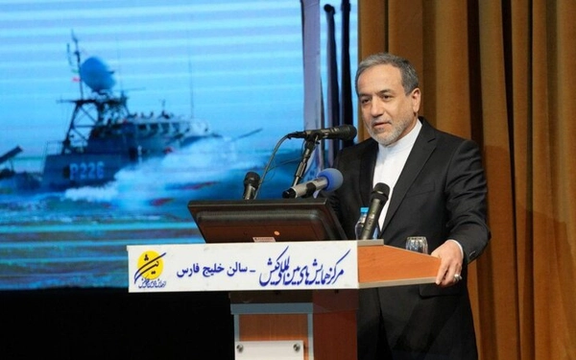
The Iranian foreign minister, reaffirming Tehran's unwavering support for the Syrian military, left Tehran for Damascus on Sunday as opposition forces intensify their offensive against Bashar al-Assad's troops in Syria.
“The Islamic Republic of Iran firmly supports the Syrian army and government,” Abbas Araghchi said during a Navy Day event in Tehran on Saturday, ahead of his visit to Damascus.
“We make no distinction between the Zionist regime and Takfiri terrorists,” he added, referring to Syria's Islamist rebels and denouncing what he described as destabilizing efforts by external actors in the region.
He also added that he is going to deliver Tehran’s message for the Syrian government during his trip.
The comments come as Syria experiences its most significant rebel advance in years. Hay'at Tahrir al-Sham (HTS), an Islamist militant group, is leading an offensive that captured large sections of Syria's second largest city, Aleppo, including its international airport according to their statement, and advanced into neighboring Hama province. This marked the most substantial territorial loss for the Assad government, which is backed by Iran and Russia.
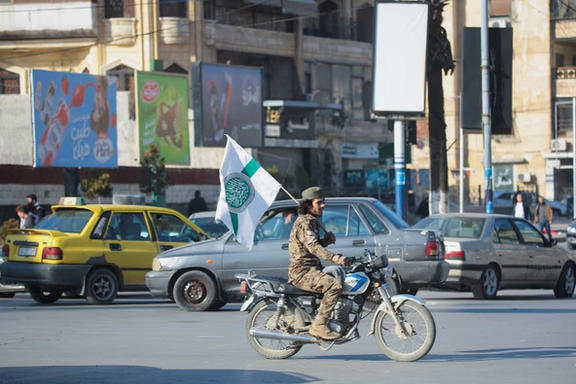
In response, Syrian forces, supported by Russian airstrikes, launched a counteroffensive to regain control. The Russian defense ministry confirmed that its air force has been striking rebel positions, describing the situation as the boldest challenge to Syrian government forces in years.
Araghchi framed the conflict as part of a broader geopolitical struggle, alleging that the United States and Israel were aligned with militant groups in the region.
“The Takfiri terrorist forces are now standing alongside America,” he said, expressing confidence in the Syrian government’s ability to reclaim lost ground.
“The Syrian army will once again, as in the past, overcome these terrorist groups.”
The fall of Aleppo comes after years of Iranian support for Assad’s military, including financial aid, weapons, and personnel from the IRGC and allied militias such as Hezbollah. These forces have propped up the Syrian government in its efforts to reclaim territory since the civil war began in 2011. However, the latest rebel offensive has demonstrated the limits of Tehran’s capabilities that have weakened in recent months because of relentless Israel attacks against Hezbollah.
The fighting in Aleppo, which was firmly under government control since 2016, has disrupted years of relative calm in Syria’s civil war. Over 50 towns and villages fell to rebel forces, with reports of significant casualties among Syrian government troops, who retreated from several areas.
The developments have drawn international attention, with the White House National Security Council condemning the Assad government for its reliance on Iran and Russia.
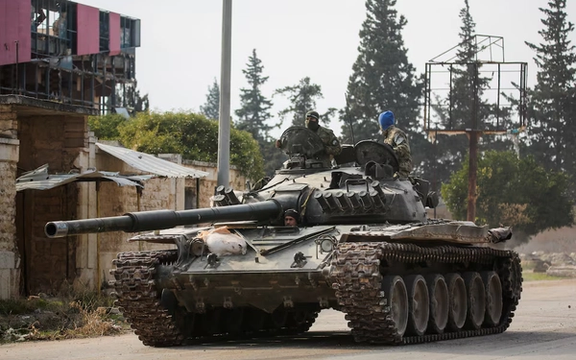
Syria’s refusal to engage in a political process and its dependence on Iran and Russia “has created the conditions now unfolding, including the collapse of regime lines in northwest Syria,” said NSC spokesperson Sean Savett.
Meanwhile, the Syrian Democratic Forces (SDF), led by Kurdish groups and backed by the United States, expanded their control in parts of Aleppo as government forces withdrew. The conflict’s resurgence has reignited regional tensions, with its intersections in Gaza, Lebanon, and northwest Syria highlighting the broader geopolitical stakes.
Araghchi’s visit to Damascus forms part of Iran’s broader outreach to save the Assad government. Foreign Ministry spokesperson Esmail Baghaei on Saturday announced plans for Araghchi’s further meetings with Turkish officials after Damascus.
The renewed fighting signals a potential turning point in the 13-year Syrian civil war, as key players reassert their influence in the country’s fragmented political and military landscape.

Iran's minister of education has said that approximately 750,000 students in the country are not continuing their education, though he distanced the issue from systemic failures within the education sector.
Speaking on Saturday, Alireza Kazemi stated that the widespread school dropout rates are largely driven by familial, economic, and social factors, rather than structural shortcomings within the Ministry of Education.
Inflation in Iran has been hovering around 40% for the past five years, impoverishing about one-third of the population. As families find themselves under tremendous financial pressure, they are unable to afford expenses and many children go to work at menial jobs.
Kazemi reported that about 150,000 of these dropouts are from the early primary education level, while the remaining students come from both lower and upper secondary levels.
“The dropout issue is more complex than a lack of school infrastructure. It involves broader socioeconomic factors that extend beyond the ministry’s direct control,” he added.
This statement follows recent comments by Ali Rabiei, advisor on social affairs to President Masoud Pezeshkian, who reported on Thursday that 170,000 children were not attending school at the primary level, with dropout rates increasing sharply after elementary school.
Rabiei’s comments highlight a worrying trend of educational disengagement at a young age, particularly in rural and economically disadvantaged regions.
Kazemi, however, countered statements that the Iranian education system is underfunded or under-resourced.
Iran's education system faces numerous systemic challenges, including outdated curricula, overcrowded classrooms, and underfunded schools, all of which hinder the quality of learning. Teachers often work in difficult conditions with limited resources, struggling to address the diverse needs of students.
The lack of adequate infrastructure, particularly in rural areas, exacerbates these issues, making it harder for students to access quality education.
The minister also pointed to the challenges faced by secondary-level students, many of whom, Kazemi claimed, are seeking employment or vocational training opportunities.
He also identified cultural and gender barriers, particularly for rural girls who are prevented from attending mixed-gender schools.
“There are sociocultural factors at play,” he added, suggesting that these barriers to education are a significant driver of the dropout crisis.
Criticism of the ministry’s handling of the dropout issue has grown in recent months. Farshad Ebrahimpour, a member of the Education Committee in Parliament, said on October 21 that around two million students had failed to register for school this year, largely due to economic constraints faced by families.
Kazemi also dismissed the notion that there is a shortage of schools, teachers, or educational resources, instead arguing that the issue stems from external pressures on families, not the system's capacity to deliver education.
In a provocative response to critics, Kazemi suggested that those questioning the education system could ask children seen working at Tehran’s intersections why they aren’t in school.
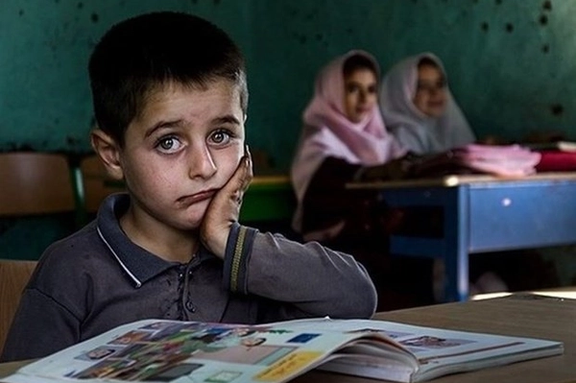
"The issue is not one of access," he said. "It is about the choices made by families and communities in the face of economic hardship."
Iran's education system is further undermined by the economic struggles of teachers, whose salaries have not kept pace with inflation, leading to widespread dissatisfaction.
Teachers in Iran face financial hardship, as they earn less than $200 a month. This economic pressure has sparked a series of protests in recent years, with educators demanding better pay, improved working conditions, and greater investment in the education sector.
Despite these protests, the government's response has been largely dismissive, contributing to a sense of neglect and disillusionment among teachers. The lack of attention to their demands has not only affected teachers’ morale but also impacted the quality of education, as many educators seek additional work to make ends meet, diverting their focus from their primary responsibility of teaching.
Data provided by Iranian media in September showed that nearly 790,000 students were out of school this year.
In a separate report, Mohammad Molavi, Deputy Chairman of the Education Committee in parliament, said in July that 911,000 students were not attending school, with 400,000 of them at the primary education level.
Molavi also highlighted that financial difficulties were a major factor behind the dropouts, with 279,000 students leaving school due to their families' inability to cover education-related costs.
As the debate over the country's educational crisis continues, the broader socioeconomic challenges does not mean that parents are opposed to education but they are just poor.

The number of HIV infections in Iran contracted via sexual intercourse has more than doubled according to the country's top research body in the field, highlighting the theocracy's strict policy toward contraception.
“HIV transmission through sexual contact has increased, with 28 percent of the 24,760 individuals who tested positive contracting the virus this way," Ladan Abbassian, the head of the country’s AIDS Research Center told IRGC-affiliated Tasnim on Saturday, without specifying a time period.
"This percentage rose to 65 percent in the first six months (of the Iranian calendar starting in mid-March 2024), indicating a shift in infection patterns.”
Women made up 19 percent of the total who tested positive for HIV, a figure that increased to 32 percent from March to August 2024. This shift marks a significant change in transmission patterns, which were previously dominated by men, Abbasian added.
Nearly three-quarters of those diagnosed with HIV are aged 20 to 45. “This age group should be the primary target for awareness and diagnostic efforts,” she said.
Drug users make up 53 percent of HIV cases, with 10 percent of those diagnosed in the first half of this year reporting injection drug use.
Experts have warned that government-imposed restrictions on contraceptive methods and the discontinuing of free distribution of contraceptives in some health centers could lead to a rise in HIV infections.
In 2021, Masoud Mardani, a member of the National HIV/Aids committee and professor at Shahid Beheshti medical university criticized these policies, saying that restrictions on contraceptive use to boost population growth not only risk unintended pregnancies and sexually transmitted infections but could also trigger a wave of HIV cases due to limited access to preventative tools.
In 2014 Supreme Leader Ali Khamenei announced that Iran should aim to increase the population – which is now around 85 million – to 150 million by 2050.
Despite officials’ efforts to implement directives, the population growth strategy has failed, with many attributing this to Iran’s dire economic conditions, as birth rates continue to fall and the population is projected to halve by the end of the century.
The rise in HIV cases among women and young adults in Iran reflects shifting transmission patterns and may underscore the need for stronger prevention strategies and better access to care to curb the virus's spread.